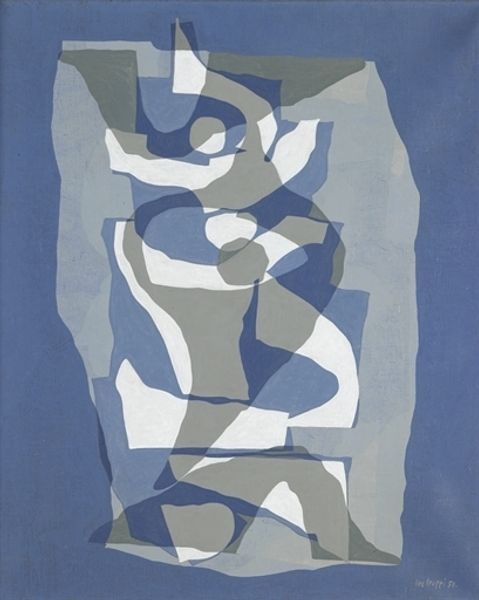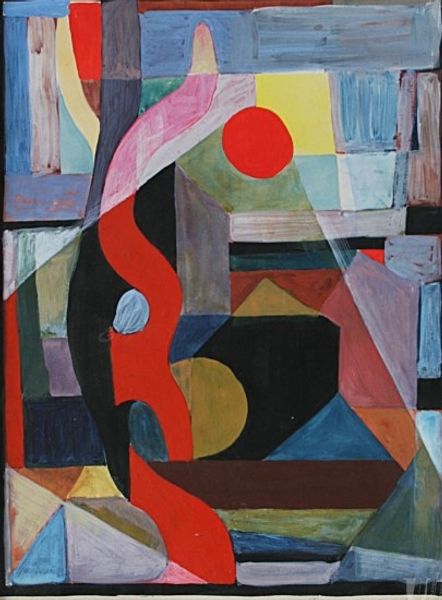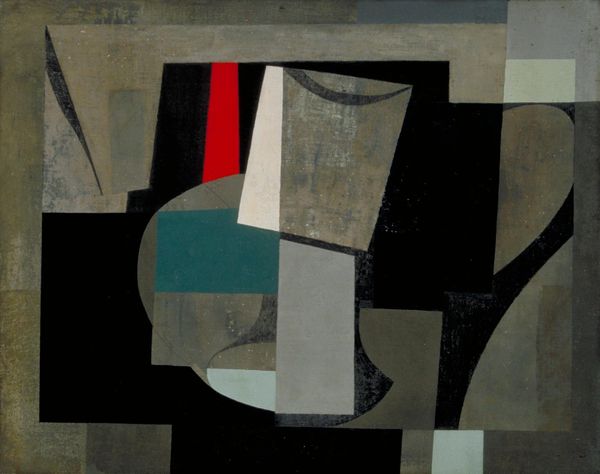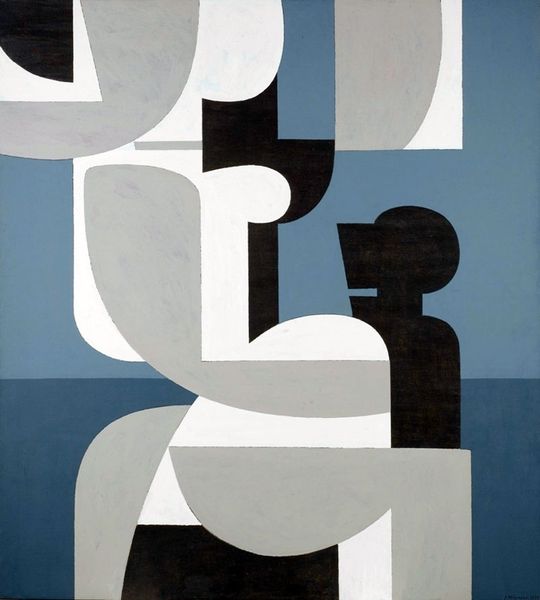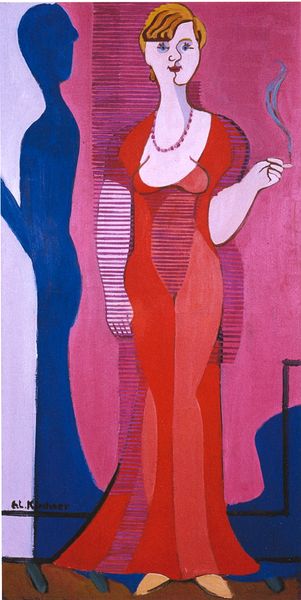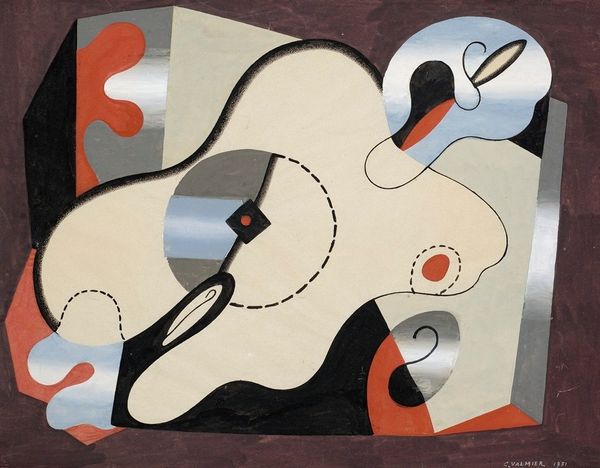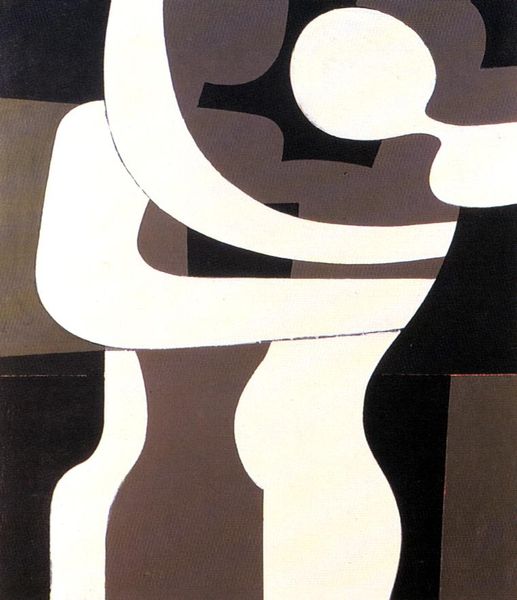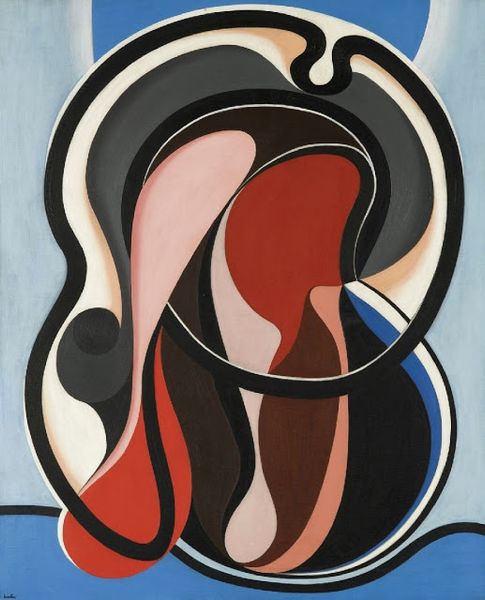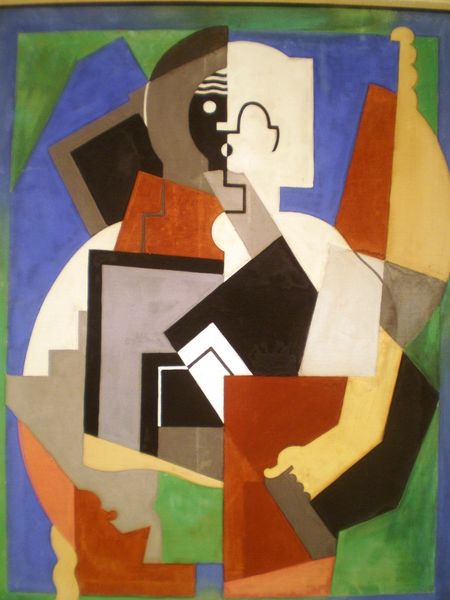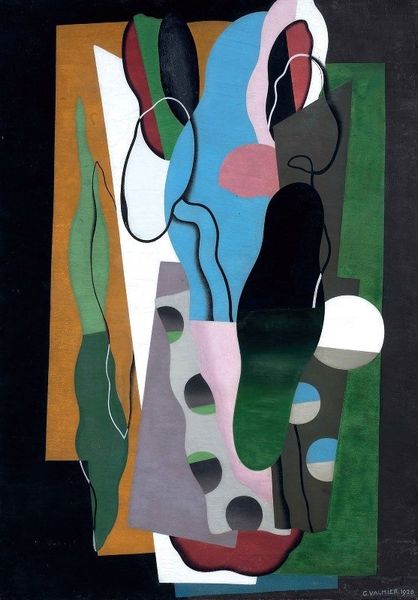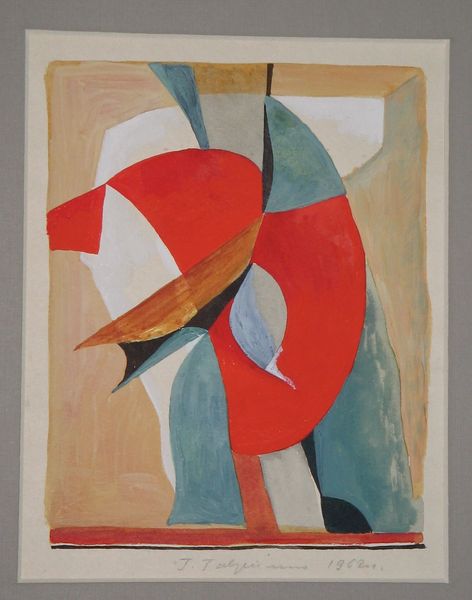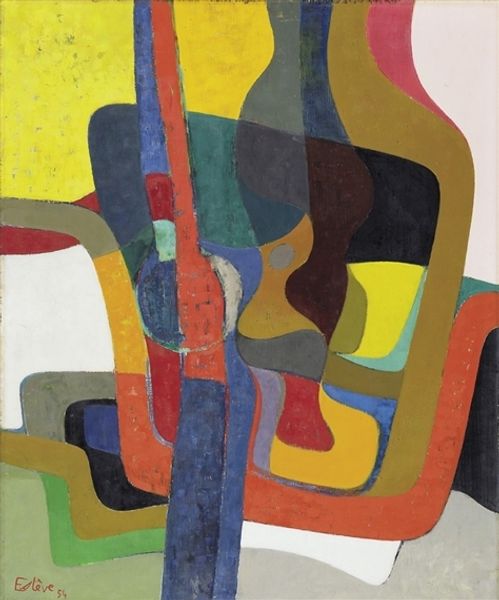
collage, painting, oil-paint
#
portrait
#
cubism
#
collage
#
painting
#
oil-paint
#
oil painting
#
geometric
#
modernism
Copyright: Public domain
Curator: This painting is called “Black Pierrot.” Jindrich Styrsky made it in 1923. Editor: Whoa, talk about a mood. It’s so… geometric and fractured, but there’s a delicate sadness lurking underneath. The colours feel muted but purposeful; there are geometric forms in various blacks, reds and grays—offset against delicate floral accents. Curator: Indeed, Styrsky often incorporated elements of both Cubism and collage into his art. What’s intriguing is the almost whimsical nature of the subject. Pierrot is a character with a very specific cultural history that traditionally conveys pathos, longing, the eternal jester whose heart is always breaking. Editor: Yes! And Styrsky flips that by fragmenting Pierrot, presenting them as a composition more than a person. This disruption mirrors the sociopolitical context following the First World War, a time marked by alienation and uncertainty. It’s like Styrsky uses Cubism to dissect not just form but also feeling. The Black Pierrot suggests an analysis of identity in disorienting times. Curator: Exactly, the black colouring seems to give Pierrot's iconic sorrow a sharp edge. Almost as if it has taken on a new, more world-weary aspect, becoming cynical. What do you make of the collage aspects? Editor: Those paper elements bring the painting into the real world in such a stark way, further enhancing that disquiet. Collage as a technique breaks from painting as it makes room for more textures. What I am also fascinated by is the relationship between the mask that Pierrot wears in the traditional story and Styrsky's decision to visually fragment this particular character. I feel that his strategy challenges not only what it means to be seen but what it feels like to *not* be. It makes the experience of this piece resonate in our post-digital present, actually. Curator: I concur! So, do you feel the “Black Pierrot” is tragic or is there maybe even some absurdist comedy there? Or does this piece leave us uncertain, somewhere in between? Editor: Always both, right? Art at its most vital should pose questions, create dialogue, spark further interpretation…it should trouble, and inspire, us simultaneously! It can offer catharsis as well as analysis. It’s a tall order but this composition definitely fulfils the brief.
Comments
No comments
Be the first to comment and join the conversation on the ultimate creative platform.
